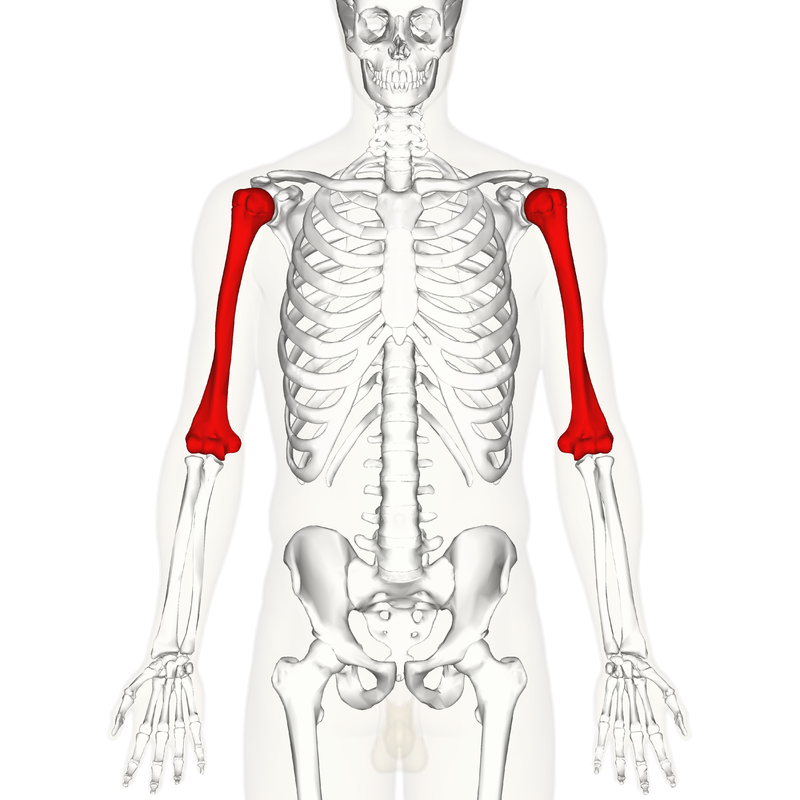Learning Objectives
By the end of this section, you will be able to:
- Identify the major anatomical landmarks of the humerus.
- Describe the location and function of key features at the proximal, shaft, and distal regions.
- Relate humerus structure to its articulations with the scapula, radius, and ulna.
The humerus
The humerus is the single bone of the upper arm region. This upper arm bone articulates proximally with the scapula and distally at the elbow with the radius and ulna. The proximal end is expanded into a head which articulates with the glenoid cavity of the scapula.

Let’s first break down the key regions of the humerus.
Use the labeled images below to explore the major anatomical landmarks of the humerus. As you review each region—proximal, shaft, and distal—match the descriptions to the visual features shown.
